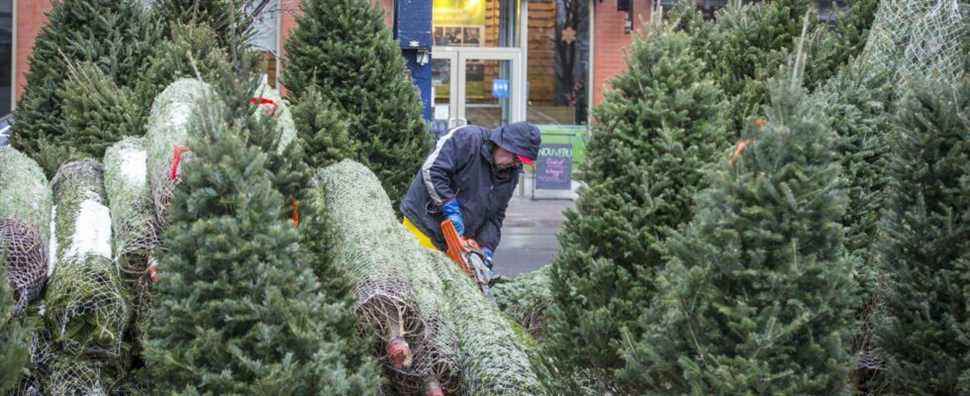This text is part of the special section 20 years of CIRAIG
Explaining the issues of sustainable development and life cycle analysis properly is the mission of student researchers affiliated to the International Reference Center on the Life Cycle of Products, Processes and Services (CIRAIG). Portraits of some of them, all of whom have the desire to pass on their knowledge to the general public.
Guide the consumer
Catherine Lalongé and Lysanne Blais-Gingras wanted to explain the complex process of life cycle analysis (LCA) using the example of disposable shopping bags. The two researchers were thus awarded first prize in the student science popularization competition “Valorize sciences! For their blog post and brochure on the subject.
“Being able to have clear examples or to make analogies in my head, I find that very relevant to make my own choices. And this competition showed that it was something that we could make accessible, ”underlines Mme The loin. She and Mme Blais-Gingras are both doing a master’s degree at the University of Quebec in Montreal (UQAM). The first, at the Institute of Environmental Sciences and the second, at the School of Management Sciences.
Researchers affiliated with CIRAIG, the students chose the example of bags and united their expertise to summarize the process for the general public. “Wondering how we could put ourselves in the shoes of non-experts, that was what brought us together”, notes Mme Blais-Gingras.
“We really went back to basics of life cycle analysis, step by step,” adds Catherine Lalongé. The young researchers were thus able to demonstrate to what extent such an analysis is multidisciplinary since it involves specialists in chemistry, biology and engineering in particular.
Such processes make it possible to guide people towards the best options as consumers, continues Catherine Lalongé. “During the holidays, the eternal question about the choice of tree, natural or plastic, is constantly coming back,” she illustrates. With an analysis of each person’s life cycle, it points us to the most sustainable solution. “
If the LCA of plastic bags is already well known to the scientific community, it is noticeably less so to the general public. By transmitting this type of knowledge to as many people as possible, Lysanne Blais-Gingras for her part thinks that “the discussions could have an even greater scope”.
The wine of the future
Disembarking from his native Mexico to study in Quebec, Ivan Viveros Santos won second prize in the “Value the sciences! ”For his research on the impacts of climate change on wine. In order to popularize the ecotoxicity of copper in wine-growing areas, this adopted Quebecer has created a page on the question, What wine will he make tomorrow? on GitHub.
The doctoral student in chemical engineering at Polytechnique Montréal is delighted with this honor bestowed upon him. “It motivates me to continue. It’s a great opportunity to be able to communicate our results to society as a whole, ”says the man who arrived in Quebec in 2014 for a master’s degree and who never left.
His work led him to look into the toxic properties of using copper in a phytosanitary mixture for vines. “In general, we study indicators such as toxicology and environmental impacts separately. Me, I watch the interaction of the two together, ”he summarizes. Its objective is thus to determine if the consequences are the same as when we observe each factor separately.
Will the major wine-producing regions be able to continue their activities with climate change? “The climatologists say that it is possible, but that the altitude of the vineyards will have to be reviewed. We are also seeing a move northward, at least in Europe, because conditions will certainly be more favorable there in the decades to come, ”says Viveros Santos. Other solutions would consist in particular of modifying the management of the vine, or the grape variety. But all of this will inevitably have an impact on the taste of the wines.
Fight against GHGs in Quebec
Six women. Six engineering students at Polytechnique Montreal. Together they founded PolyCarbone in 2017. This organization encourages Quebec academics to reduce their greenhouse gas emissions by adopting more responsible behavior.
“They say it’s a spin off of CIRAIG because we were all involved in research projects with CIRAIG when we created PolyCarbone ”, summarizes Catherine Houssard. The young woman has a doctorate in industrial engineering and is a specialist in life cycle analysis.
The one who is now scientific coordinator at CIRAIG explains that at the base, the students wanted to change the consumption habits of Quebecers. “The idea was to maximize the positive impact of each individual while minimizing the effort they have to make,” she says.
The non-profit organization is now developing partnerships with different organizations that want to engage their communities in climate action. “We invite them to use our tools by personalizing them with their logo, their way of speaking, to have a much wider influence on all of Quebec society and reach as many people as possible,” explains the researcher.
PolyCarbone currently has about thirty members and has notably created a carbon calculator contextualized to the reality of here. “Unlike elsewhere in Quebec, when you buy an electrical appliance, it is not the energy consumed that will count. Rather, it is the lifespan of this object, because our hydroelectricity has very little impact on climate change, ”she emphasizes.
The organization is also preparing an application that allows a person to follow their progress and which will help them maintain their efforts to change their habits. “It’s the Climate Weight Watchers!” »Illustrates Mme Houssard.
PolyCarbone is currently working on its business plan with the Esplanade project accelerator. “We are in good hands for a future that is interesting for society,” she concludes.
